Catalogue > List by artist
Browse the entire list of Rencontre Internationales artists since 2004. Use the alphabetical filter to refine your search. update in progress
Eske Schlüters
Catalogue : 2016Title (Life goes on) | Video | hdv | color | 12:0 | Germany | 2015
Eske SchlÜters
Title (Life goes on)
Video | hdv | color | 12:0 | Germany | 2015
This is a film about the making of a film about a film that was never made. The film described here, as it is being made, is a true film, which however operates with film illusions to the extent that the film that treats this film is a film that was never made because it would have served to maintain illusions. This is a fictional documentary or a documenting fiction about a film that was planned and partly realized by the Ufa in the 1940s.
Romana Schmalisch, Robert Schlicht
Catalogue : 2012Recitando | Experimental fiction | hdv | color | 35:1 | Germany | 2010
Romana Schmalisch, Robert Schlicht
Recitando
Experimental fiction | hdv | color | 35:1 | Germany | 2010
The film ?Recitando? is the documentation of an encounter between workers from the Moscow paper factory ?October? and two filmmakers from abroad. The film experiments with and combines modes of documentary and fiction, and strategies of theatre and film, in order to investigate into and construct models of cinematography. The paper production process which seems to be captured in documentary shots is in fact staged for the camera by the workers, since the factory does not pro¬duce anything at the moment ? and this nonproduction is the condition for their appearance as actors in the film. For at the same time, the workers recount and reflect upon their current situation ? being filmed instead of producing paper ? in choric recitations and two songs, delivered in a manner reminiscent of Brechtian ?Lehrstücke?. The customary contrast of documentary and fictional modes, of reality ?caught unawares? and scripted enactment is thus being twisted and deconstructed. Additionally, the film is continually interrupted by intertitles citing discussions from late 1920s? Soviet cinema ? e. g., about documentarism à la Dziga Vertov and Esfir Shub, about Sergei Eisenstein?s reenactment of the October revolution ten years after the event and the film?s mixed reception, and of the relation between images and text ? thus evoking a friction between early avant-garde cinematography and today?s filmic modes, as well as rendering the question as to who speaks even more uncertain. The two filmmakers may not only come from a different country but even from a different era. The film thus experiments with different cinematographic models. Instead of pur¬porting to present something which could be considered as a finished film, it at¬tempts to create fissures in the cinematographic texture as spaces for the reflection on different filmic modes, on the interrelations of history of film, and on representa¬tion and reality. ?Recitando? was shot in the Moscow paper factory ?October? (formerly ?Red October?), which was founded in 1924. During Soviet times one of Moscow?s largest paper mills, the residual staff only rarely produces paper today. Parts of the com¬plex have been transformed into the art space PROEKT_FABRIKA, where the film premiered in January 2010.
Romana Schmalisch (1974) born and based in Berlin Romana Schmalisch graduated with an MFA from the Universität der Künste, Berlin, in 2002. She focuses on the architectonic urban space, its changes and the accompanying social changes. In her film works, she combines sequences shot by herself with image and film quotations and with text fragments in the form of a collage, juxtaposing different layers of times and imagery. Romana Schmalisch collaborated on various film projects with Robert Schlicht. Robert Schlicht (1975) born and based in Berlin Robert Schlicht has studied philosophy and literature and graduated from the Humboldt University Berlin. His thesis with the title ?Passage au Cinéma? examined the relation of Walter Benjamin?s film theory and his theory of history and historiography. Subsequently, Robert Schlicht was concerned with the interface of theory and film, and collaborated on various film projects with Romana Schmalisch. Recent exhibitions/screenings (selection): National Centre for Contemporary Arts, NCCA, Moscow (2011), centre d?art passerelle, Brest (2010), Proekt_Fabrika, Moscow (2010), Utopiana, Yerevan, Armenia (2009), National Centre for Contemporary Arts, NCCA, Moscow (2009), Centre for Contemporary Art at Ujazdowski Castle, Warsaw (2009), Wilhelm Lehmbruck Museum, Duisburg (2007), STUK Theater, Leuven (2007), Arsenal/Freunde der deutschen Kinemathek, Berlin (2007), Arsenal/Freunde der deutschen Kinemathek, Berlin (2005)
Catalogue : 2011Real Estate Avantgarde | Experimental video | dv | color and b&w | 5:20 | Germany | 2010
Romana Schmalisch
Real Estate Avantgarde
Experimental video | dv | color and b&w | 5:20 | Germany | 2010
Real Estate Avantgarde »Real Estate Avantgarde«, HD, 5:20 min., 2010 ?Real Estate Avantgarde? is a fictitious promotion trailer for a real estate investment project in St Petersburg. The investor Igor Burdinsky has purchased the former textile factory ?Red Banner?, a masterpiece of avantgarde architecture, and is now seeking partners to realise a cultural and/or business centre. While the investor draws on the symbolic power of avantgarde architecture, the film in turn appropriates this business strategy.
Romana Schmalisch is based in Berlin. Recent exhibitions/screenings include: centre d?art passerelle, Brest (2010) Transmission Gallery, Glasgow (2010), Proekt_Fabrika, Moscow (2010) FormContent, London (2009), National Centre for Contemporary Arts, NCCA, Moscow (2009), Contemporary Art Centre, CAC, Vilnius (2009), Centre for Contemporary Art at Ujazdowski Castle, Warsaw (2009), Museum Folkwang, Essen (2008), MuseumKunstPalast, Düsseldorf (2008), Wilhelm Lehmbruck Museum, Duisburg (2007), STUK, Leuven (2007)
Catalogue : 2010Decision of the party | Experimental film | super8 | color | 5:33 | Germany | 2008
Romana Schmalisch
Decision of the party
Experimental film | super8 | color | 5:33 | Germany | 2008
Decision of the Party (2008) is a film, which combines Super8 material from today?s Volgograd with parts of the sound track from the Soviet propaganda film The Promise (Kliatva, 1946). In this movie, Joseph Stalin plans and realises ?his? city, Stalingrad (now Volgograd). Thus, the real city of today is juxtaposed with its past medial vision, in turn becoming a projection of its own history within the film.
Romana Schmalisch 1974 born in Berlin, Germany lives and works in Berlin, Germany Education 1995 Universität der Künste, Berlin 2000 Hunter College, New York, USA 2001 Surikov-Institut, Moscow 2002 MFA, Universität der Künste, Berlin 2006/2007 Researcher Fine Art, Jan van Eyck Akademie, Maastricht Grants 2009 International Residency, Berlin Senate`s Department of Science, Research and Culture in collaboration with the Whitechapel Gallery and Studio Voltaire, London | 2007 Karl-Hofer-Gesellschaft Art Award, Berlin | Provinzial Förderprojekt 2005 Goldrausch Künstlerinnenprojekt art IT | film grant from the Berlin Senate for Cultural Affairs, Berlin 2004 DAAD stipend, Paris 2003 project grant from the Berlin Senate for Cultural Affairs, Berlin for ?Dom Sovietov? 2002/2003 Kyoung-an Artist-in-Residency, Seoul
Catalogue : 2009Weg zum Klub. Erholung durch Kultur | Experimental video | 16mm | color | 11:0 | Germany | 2007
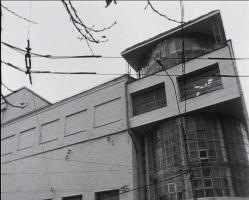
Romana Schmalisch
Weg zum Klub. Erholung durch Kultur
Experimental video | 16mm | color | 11:0 | Germany | 2007
Romana Schmalisch (English Version) ?Walking to the Club. Recreation through Culture?, mixed media/DV, 11 min., 2007 The film combines in the form of a collage Soviet avant-garde buildings from the 1920s, which I have recorded in b/w 16mm shots, with film and audio recordings from the late 1930s, in which the subject of changes in the city of Moscow plays a central role. While the protagonists in the films from the 1920s had still been able to actually see the real city of Moscow with their own eyes, the perspective in the films from the 1930s is directed by ideological texts ? the protagonists get to see no more than an ideal mock-up of the city. The films show a fictitious cityscape, whose centre is often taken by the ?Palace of Soviets?, a building that, like many others, was never realised. These changes in the political as well as the architectural landscape within a period of no more than a couple of years become the central subject of the film ?Weg zum Klub. Erholung durch Kultur?. The visions of the early avant-garde are confronted with Stalinist mega plannings that also used the medium film in order to determine the image of the city even before its realisation. The film ?Weg zum Klub. Erholung durch Kultur? examines the media image of the city of Moscow in a time of radical political and social changes. Among the films I cite, it is in particular Alexander Medvedkin?s ?The New Moscow? (1938) that visualises the rapid changes in this period, and uses the architectonic model as an indispensable part of the properties. The attempt of a painter to capture Moscow in his pictures fails since the cityscape changes at a tremendous pace: the old buildings vanish overnight, are being replaced by others. The film shows an engineer travelling from Siberia to Moscow, where he presents his plans for the new city, the city he had never seen but always dreamt of. Film documents from the Sukharevskaya tower, the Cathedral of Christ the Saviour and the Strastnoy cloister being blown up are integrated in his model ? instead of these buildings drawings and models of the new city appear on the screen. Thus, the real space is replaced by a city comprising of paper models and houses which are supposed to symbolise a new reality in the film. ?Weg zum Klub. Erholung durch Kultur? works with quotations from the dialogues of this film.
Romana Schmalisch 1974 born in Berlin, Germany lives and works in Berlin, Germany Education 1995 Universität der Künste, Berlin 2000 Hunter College, New York, USA 2001 Surikov-Institut, Moscow 2002 MFA, Universität der Künste, Berlin, Prof. K. Sieverding 2006/2007 Researcher Fine Art, Jan van Eyck Akademie, Maastricht Grants 2007 Karl-Hofer-Gesellschaft Art Award, Berlin | Provinzial Förderprojekt 2005 Goldrausch Künstlerinnenprojekt art IT | film grant from the Berlin Senate for Cultural Affairs, Berlin 2004 DAAD stipend, Paris 2003 project grant from the Berlin Senate for Cultural Affairs, Berlin for ?Dom Sovietov? 2002/2003 Kyoung-an Artist-in-Residency, Seoul Solo exhibitions 2008 ?Il braccio di Lucifero si pone 645 1/3 braccia?, Galerie Karin Günther, Hamburg | ?Drehort Zukunft?, Uqbar Berlin 2007 ?Future Cities?, Wilhelm Lehmbruck Museum, Duisburg * ?Radiation. An Alien Revue? (with Robert Schlicht), Performance, STUK Theater, Leuven 2006 ?Two Steps Back Till Unrise?, Casco Projects, Utrecht (with Nina Könnemann) 2005 ?reading in absence?, dreizehnzwei, Vienna (with Tatiana Lecomte) * 2003 ?A Journey to the Space?, Young Eun Museum Contemporary Art, Seoul * Group exhibitions/screenings (selection) 2008 ?Digging Deeper II?, Museum Folkwang, Essen | ?Zerbrechliche Schönheit?, Museum Kunst Palast, Düsseldorf * | ?Cinema?, Galerija Meno Parkas, Kaunas 2007 ?Changing Spaces?, Städtische Galerie Waldkraiburg * ?Radiation?, Arsenal/Freunde der deutschen Kinemathek, Berlin | ?Videonale 11?, Kunstmuseum Bonn, Bonn * 2006 ?Resonances?, Artis, Den Bosch * | ?Tales from a Travel Journal?, Contemporary Art Center (CAC), Vilnius * | ?La Boum II?, Galerie Sies+Höke, Düsseldorf * | ?La Boum I?, Galerie Ben Kaufmann, Munich 2005 ?Differences ? Art as a Film Form?, Migros Museum für Gegenwartskunst, Zürich | ?Fiav.05?, Centre d?Art Santa Monica, Barcelona | ?Polished?, Goldrausch, Kunstraum Kreuzberg/Bethanien, Berlin * | ?Jump Cut-Nights?, SK Stiftung Kultur, Cologne 2004 ?Representing History?, Austria Filmmakers Cooperative, Filmcasino, Vienna 2003 ?Museale 03?, Museumsfilmfestival, Kulturforum, Berlin ( * with catalogue) Bibliography 2008 Barbara Buchmaier, ?Was gestern Welt von morgen war?, in: Texte zur Kunst, nr. 71, pp. 224?226 | ?Zerbrechliche Schönheit?, Hatje Cantz Verlag 2007 ?Reconstructing Futures?, German/English catalogue, Stiftung Wilhelm Lehmbruck Museum, texts by Robert Schlicht and Sabine Maria Schmidt | ?Karl-Hofer-Preis 2007?, text: Esther Buss | ?Changing Spaces?, German/English catalogue, Modo Verlag, pp. 28?31, text: Elke Keiper and Axel Wieder | ?Radiation?, brochure, Kino Arsenal/Freunde der deutschen Kinemathek 2006 ?Tales From the Travel Journal Vol.1?, English catalogue, CAC, pp. 30?31/72?73, with a text by Catherine Hemelryk | ?Videonale 11?, German/English catalogue, Walther König Verlag, pp. 86-87, with a text by Thomas Jantschik | ?Resonances?, poster, with a text by Astrid Wege 2005 ?reading in absence?, catalogue, with texts by Melanie Ohnemus and Marc Riess | ?Der Berg?, catalogue, Goldrausch, with a text by Tabea Metzel Collections Sammlung Provinzial Sammlung Stiftung Wilhelm Lehmbruck Museum, Duisburg
Romana Schmalisch
Catalogue : 2012Recitando | Experimental fiction | hdv | color | 35:1 | Germany | 2010
Romana Schmalisch, Robert Schlicht
Recitando
Experimental fiction | hdv | color | 35:1 | Germany | 2010
The film ?Recitando? is the documentation of an encounter between workers from the Moscow paper factory ?October? and two filmmakers from abroad. The film experiments with and combines modes of documentary and fiction, and strategies of theatre and film, in order to investigate into and construct models of cinematography. The paper production process which seems to be captured in documentary shots is in fact staged for the camera by the workers, since the factory does not pro¬duce anything at the moment ? and this nonproduction is the condition for their appearance as actors in the film. For at the same time, the workers recount and reflect upon their current situation ? being filmed instead of producing paper ? in choric recitations and two songs, delivered in a manner reminiscent of Brechtian ?Lehrstücke?. The customary contrast of documentary and fictional modes, of reality ?caught unawares? and scripted enactment is thus being twisted and deconstructed. Additionally, the film is continually interrupted by intertitles citing discussions from late 1920s? Soviet cinema ? e. g., about documentarism à la Dziga Vertov and Esfir Shub, about Sergei Eisenstein?s reenactment of the October revolution ten years after the event and the film?s mixed reception, and of the relation between images and text ? thus evoking a friction between early avant-garde cinematography and today?s filmic modes, as well as rendering the question as to who speaks even more uncertain. The two filmmakers may not only come from a different country but even from a different era. The film thus experiments with different cinematographic models. Instead of pur¬porting to present something which could be considered as a finished film, it at¬tempts to create fissures in the cinematographic texture as spaces for the reflection on different filmic modes, on the interrelations of history of film, and on representa¬tion and reality. ?Recitando? was shot in the Moscow paper factory ?October? (formerly ?Red October?), which was founded in 1924. During Soviet times one of Moscow?s largest paper mills, the residual staff only rarely produces paper today. Parts of the com¬plex have been transformed into the art space PROEKT_FABRIKA, where the film premiered in January 2010.
Romana Schmalisch (1974) born and based in Berlin Romana Schmalisch graduated with an MFA from the Universität der Künste, Berlin, in 2002. She focuses on the architectonic urban space, its changes and the accompanying social changes. In her film works, she combines sequences shot by herself with image and film quotations and with text fragments in the form of a collage, juxtaposing different layers of times and imagery. Romana Schmalisch collaborated on various film projects with Robert Schlicht. Robert Schlicht (1975) born and based in Berlin Robert Schlicht has studied philosophy and literature and graduated from the Humboldt University Berlin. His thesis with the title ?Passage au Cinéma? examined the relation of Walter Benjamin?s film theory and his theory of history and historiography. Subsequently, Robert Schlicht was concerned with the interface of theory and film, and collaborated on various film projects with Romana Schmalisch. Recent exhibitions/screenings (selection): National Centre for Contemporary Arts, NCCA, Moscow (2011), centre d?art passerelle, Brest (2010), Proekt_Fabrika, Moscow (2010), Utopiana, Yerevan, Armenia (2009), National Centre for Contemporary Arts, NCCA, Moscow (2009), Centre for Contemporary Art at Ujazdowski Castle, Warsaw (2009), Wilhelm Lehmbruck Museum, Duisburg (2007), STUK Theater, Leuven (2007), Arsenal/Freunde der deutschen Kinemathek, Berlin (2007), Arsenal/Freunde der deutschen Kinemathek, Berlin (2005)
Catalogue : 2011Real Estate Avantgarde | Experimental video | dv | color and b&w | 5:20 | Germany | 2010
Romana Schmalisch
Real Estate Avantgarde
Experimental video | dv | color and b&w | 5:20 | Germany | 2010
Real Estate Avantgarde »Real Estate Avantgarde«, HD, 5:20 min., 2010 ?Real Estate Avantgarde? is a fictitious promotion trailer for a real estate investment project in St Petersburg. The investor Igor Burdinsky has purchased the former textile factory ?Red Banner?, a masterpiece of avantgarde architecture, and is now seeking partners to realise a cultural and/or business centre. While the investor draws on the symbolic power of avantgarde architecture, the film in turn appropriates this business strategy.
Romana Schmalisch is based in Berlin. Recent exhibitions/screenings include: centre d?art passerelle, Brest (2010) Transmission Gallery, Glasgow (2010), Proekt_Fabrika, Moscow (2010) FormContent, London (2009), National Centre for Contemporary Arts, NCCA, Moscow (2009), Contemporary Art Centre, CAC, Vilnius (2009), Centre for Contemporary Art at Ujazdowski Castle, Warsaw (2009), Museum Folkwang, Essen (2008), MuseumKunstPalast, Düsseldorf (2008), Wilhelm Lehmbruck Museum, Duisburg (2007), STUK, Leuven (2007)
Catalogue : 2010Decision of the party | Experimental film | super8 | color | 5:33 | Germany | 2008
Romana Schmalisch
Decision of the party
Experimental film | super8 | color | 5:33 | Germany | 2008
Decision of the Party (2008) is a film, which combines Super8 material from today?s Volgograd with parts of the sound track from the Soviet propaganda film The Promise (Kliatva, 1946). In this movie, Joseph Stalin plans and realises ?his? city, Stalingrad (now Volgograd). Thus, the real city of today is juxtaposed with its past medial vision, in turn becoming a projection of its own history within the film.
Romana Schmalisch 1974 born in Berlin, Germany lives and works in Berlin, Germany Education 1995 Universität der Künste, Berlin 2000 Hunter College, New York, USA 2001 Surikov-Institut, Moscow 2002 MFA, Universität der Künste, Berlin 2006/2007 Researcher Fine Art, Jan van Eyck Akademie, Maastricht Grants 2009 International Residency, Berlin Senate`s Department of Science, Research and Culture in collaboration with the Whitechapel Gallery and Studio Voltaire, London | 2007 Karl-Hofer-Gesellschaft Art Award, Berlin | Provinzial Förderprojekt 2005 Goldrausch Künstlerinnenprojekt art IT | film grant from the Berlin Senate for Cultural Affairs, Berlin 2004 DAAD stipend, Paris 2003 project grant from the Berlin Senate for Cultural Affairs, Berlin for ?Dom Sovietov? 2002/2003 Kyoung-an Artist-in-Residency, Seoul
Catalogue : 2009Weg zum Klub. Erholung durch Kultur | Experimental video | 16mm | color | 11:0 | Germany | 2007

Romana Schmalisch
Weg zum Klub. Erholung durch Kultur
Experimental video | 16mm | color | 11:0 | Germany | 2007
Romana Schmalisch (English Version) ?Walking to the Club. Recreation through Culture?, mixed media/DV, 11 min., 2007 The film combines in the form of a collage Soviet avant-garde buildings from the 1920s, which I have recorded in b/w 16mm shots, with film and audio recordings from the late 1930s, in which the subject of changes in the city of Moscow plays a central role. While the protagonists in the films from the 1920s had still been able to actually see the real city of Moscow with their own eyes, the perspective in the films from the 1930s is directed by ideological texts ? the protagonists get to see no more than an ideal mock-up of the city. The films show a fictitious cityscape, whose centre is often taken by the ?Palace of Soviets?, a building that, like many others, was never realised. These changes in the political as well as the architectural landscape within a period of no more than a couple of years become the central subject of the film ?Weg zum Klub. Erholung durch Kultur?. The visions of the early avant-garde are confronted with Stalinist mega plannings that also used the medium film in order to determine the image of the city even before its realisation. The film ?Weg zum Klub. Erholung durch Kultur? examines the media image of the city of Moscow in a time of radical political and social changes. Among the films I cite, it is in particular Alexander Medvedkin?s ?The New Moscow? (1938) that visualises the rapid changes in this period, and uses the architectonic model as an indispensable part of the properties. The attempt of a painter to capture Moscow in his pictures fails since the cityscape changes at a tremendous pace: the old buildings vanish overnight, are being replaced by others. The film shows an engineer travelling from Siberia to Moscow, where he presents his plans for the new city, the city he had never seen but always dreamt of. Film documents from the Sukharevskaya tower, the Cathedral of Christ the Saviour and the Strastnoy cloister being blown up are integrated in his model ? instead of these buildings drawings and models of the new city appear on the screen. Thus, the real space is replaced by a city comprising of paper models and houses which are supposed to symbolise a new reality in the film. ?Weg zum Klub. Erholung durch Kultur? works with quotations from the dialogues of this film.
Romana Schmalisch 1974 born in Berlin, Germany lives and works in Berlin, Germany Education 1995 Universität der Künste, Berlin 2000 Hunter College, New York, USA 2001 Surikov-Institut, Moscow 2002 MFA, Universität der Künste, Berlin, Prof. K. Sieverding 2006/2007 Researcher Fine Art, Jan van Eyck Akademie, Maastricht Grants 2007 Karl-Hofer-Gesellschaft Art Award, Berlin | Provinzial Förderprojekt 2005 Goldrausch Künstlerinnenprojekt art IT | film grant from the Berlin Senate for Cultural Affairs, Berlin 2004 DAAD stipend, Paris 2003 project grant from the Berlin Senate for Cultural Affairs, Berlin for ?Dom Sovietov? 2002/2003 Kyoung-an Artist-in-Residency, Seoul Solo exhibitions 2008 ?Il braccio di Lucifero si pone 645 1/3 braccia?, Galerie Karin Günther, Hamburg | ?Drehort Zukunft?, Uqbar Berlin 2007 ?Future Cities?, Wilhelm Lehmbruck Museum, Duisburg * ?Radiation. An Alien Revue? (with Robert Schlicht), Performance, STUK Theater, Leuven 2006 ?Two Steps Back Till Unrise?, Casco Projects, Utrecht (with Nina Könnemann) 2005 ?reading in absence?, dreizehnzwei, Vienna (with Tatiana Lecomte) * 2003 ?A Journey to the Space?, Young Eun Museum Contemporary Art, Seoul * Group exhibitions/screenings (selection) 2008 ?Digging Deeper II?, Museum Folkwang, Essen | ?Zerbrechliche Schönheit?, Museum Kunst Palast, Düsseldorf * | ?Cinema?, Galerija Meno Parkas, Kaunas 2007 ?Changing Spaces?, Städtische Galerie Waldkraiburg * ?Radiation?, Arsenal/Freunde der deutschen Kinemathek, Berlin | ?Videonale 11?, Kunstmuseum Bonn, Bonn * 2006 ?Resonances?, Artis, Den Bosch * | ?Tales from a Travel Journal?, Contemporary Art Center (CAC), Vilnius * | ?La Boum II?, Galerie Sies+Höke, Düsseldorf * | ?La Boum I?, Galerie Ben Kaufmann, Munich 2005 ?Differences ? Art as a Film Form?, Migros Museum für Gegenwartskunst, Zürich | ?Fiav.05?, Centre d?Art Santa Monica, Barcelona | ?Polished?, Goldrausch, Kunstraum Kreuzberg/Bethanien, Berlin * | ?Jump Cut-Nights?, SK Stiftung Kultur, Cologne 2004 ?Representing History?, Austria Filmmakers Cooperative, Filmcasino, Vienna 2003 ?Museale 03?, Museumsfilmfestival, Kulturforum, Berlin ( * with catalogue) Bibliography 2008 Barbara Buchmaier, ?Was gestern Welt von morgen war?, in: Texte zur Kunst, nr. 71, pp. 224?226 | ?Zerbrechliche Schönheit?, Hatje Cantz Verlag 2007 ?Reconstructing Futures?, German/English catalogue, Stiftung Wilhelm Lehmbruck Museum, texts by Robert Schlicht and Sabine Maria Schmidt | ?Karl-Hofer-Preis 2007?, text: Esther Buss | ?Changing Spaces?, German/English catalogue, Modo Verlag, pp. 28?31, text: Elke Keiper and Axel Wieder | ?Radiation?, brochure, Kino Arsenal/Freunde der deutschen Kinemathek 2006 ?Tales From the Travel Journal Vol.1?, English catalogue, CAC, pp. 30?31/72?73, with a text by Catherine Hemelryk | ?Videonale 11?, German/English catalogue, Walther König Verlag, pp. 86-87, with a text by Thomas Jantschik | ?Resonances?, poster, with a text by Astrid Wege 2005 ?reading in absence?, catalogue, with texts by Melanie Ohnemus and Marc Riess | ?Der Berg?, catalogue, Goldrausch, with a text by Tabea Metzel Collections Sammlung Provinzial Sammlung Stiftung Wilhelm Lehmbruck Museum, Duisburg
Max Philipp Schmid
Catalogue : 2012DAS GESPENST DES GLÜCKS | Experimental video | | color | 10:20 | Switzerland | 2011
Max Philipp Schmid
DAS GESPENST DES GLÜCKS
Experimental video | | color | 10:20 | Switzerland | 2011
A man and a woman practise the great embrace. Ardently they try to simulate the vibrant style of a Hollywood musical ?.
Nicolaas Schmidt
Catalogue : 2023First Time [The Time for All but Sunset - Violet] | Experimental fiction | 0 | color | 49:0 | Germany | 2021
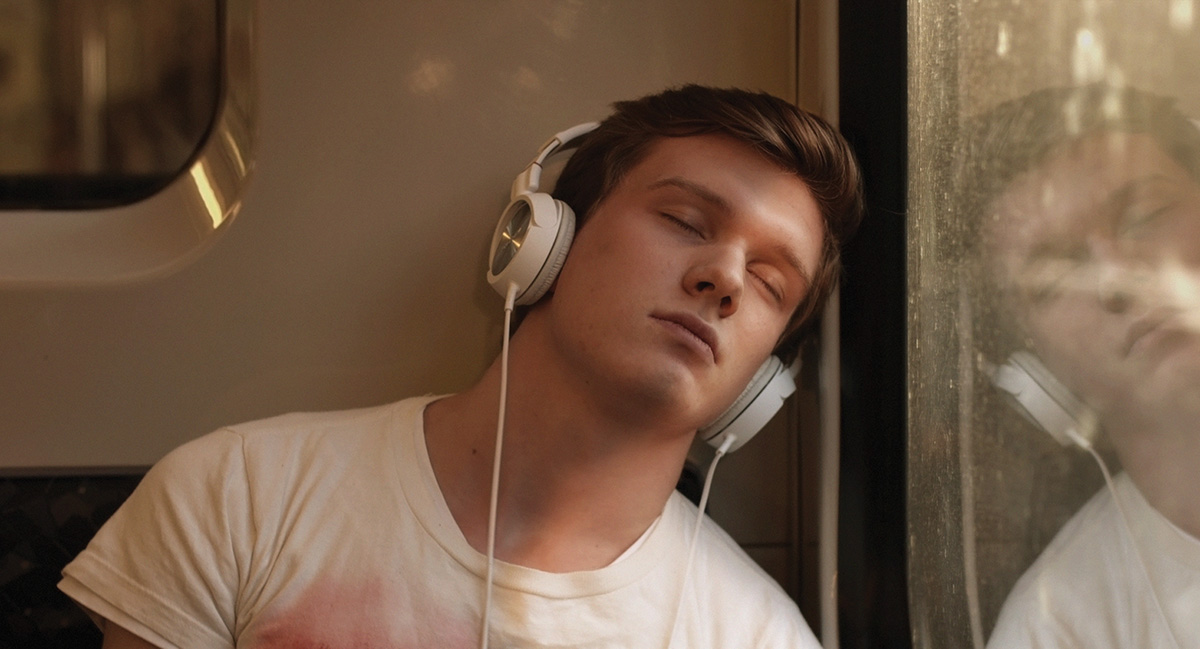
Nicolaas Schmidt
First Time [The Time for All but Sunset - Violet]
Experimental fiction | 0 | color | 49:0 | Germany | 2021
We listen to music and are on the way. In doing so, we see things and the world differently than before. So that things don't always go on like this, but may become better: Two boys meet on a train ride. Something is born – not much and yet everything. Enjoy a Golden Hour Carousel Ride. A Common Sensations Music Movie.
Nicolaas Schmidt lives and works as Filmmaker, Video- and Concept Artist in Hamburg, Europe. He studied Fine Arts, Time Based Media and Visual Communication (Film) at Hamburg Academy of Fine Arts. His works are shown at international film festivals, exhibitions and other contingencies.
Stephana Schmidt
Catalogue : 2008Handy moovie | Experimental video | | color | 3:15 | Germany | 2006
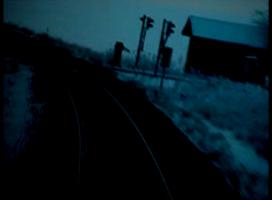
Stephana Schmidt
Handy moovie
Experimental video | | color | 3:15 | Germany | 2006
Arrival, finally again! But where is that? What sort of thing is a piano becoming when being transformed into distorted electronic streams by a mini-microphone? Elevated randomly from the archive, data have been put together into a memory package. This feeling between the places is, whose notion the entire metropolitan community can share. All takes have been shot with "handy devices". Time window: 5 years.
Stephana Schmidt was born 1976 in Halle/S., ex-GDR. After various daydreams, music experiments plus an education on classical piano he studied Philosophy and doing Photographs. He graduated in Visual Arts at Bauhaus Weimar and Fine Arts at Beaux Arts Toulouse. Ever since he lives and works as a "Multipurpose Artist" in Berlin running the "Gedankenschmied-Project".
Antoine Schmitt
Catalogue : 2011Systemic | Multimedia installation | | | 0:0 | France | 2010
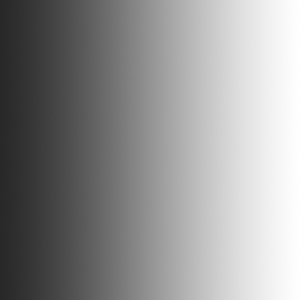
Antoine Schmitt
Systemic
Multimedia installation | | | 0:0 | France | 2010
Systemic est une installation monumentale interactive in situ qui consiste en la relecture d`un lieu public existant par la vidéoprojection sur ses espaces architecturaux d`une population de vecteurs-flèches blancs extrêmement dynamiques qu`ils habitent ainsi, et qui incarnent les forces invisibles à l`oeuvre au sein des structures du bâtiment. Sensibles aux humains qui y passent, ils réinterprètent aussi les forces de mouvement et d`intention autour et entre des visiteurs, et entre les visiteurs et le bâtiment. Très fluides, dynamiques, autonomes, dotés de comportement individuels et de groupe, ces vecteurs-forces procèdent par attraction, répulsion, curiosité, ennui, désir, volonté propre et psychologie de foule. Grouillants, ils habitent le sol, les mur, le plafond du lieu, qu`ils considèrent comme leur territoire et dont ils connaissent les moindres recoins sur lesquels ils glissent et se frottent de manière physique. Systemic s`inscrit dans une approche artistique personnelle commencée il y a 15 ans et focalisée sur la plastique des forces à l`oeuvre, et dans un processus général de confrontation de cette approche avec des champs de création traditionnels tels la musique, la danse ou l`architecture.
Artiste plasticien, Antoine Schmitt crée des oeuvres sous forme d?objets, d?installations ou de situations à l?esthétique minimale et radicale, pour traiter de la notion de mouvement propre, en tant que forme et en tant que point de vue. Héritier de l?art cinétique et de l?art cybernétique, nourri de science-fiction dans sa dimension philosophique, il révèle et manipule littéralement les forces à l?oeuvre, pour questionner les modalités de l`être libre au sein de systèmes de réalité complexes. Son travail a reçu plusieurs prix dans des festivals internationaux, parmi lesquels transmediale.07 (deuxième prix 2007) et Ars Electronica (deuxième prix 2009). Il a été exposé entre autres au Centre Georges Pompidou (Paris), à Sonar (Barcelone), au CIAC de Sienne (Italie) et dans plusieurs Nuits Blanches (Paris, Bruxelles, Madrid, Metz, Amiens). Il fait partie des collections de l?Espace Gantner (Bourogne, FR) et du fond Digitalarti (Paris, FR).
Kirstin Schmitt
Catalogue : 2020Quítame la sal de encima | Video | hdv | | 3:15 | Germany, Cuba | 2019
Kirstin Schmitt
Quítame la sal de encima
Video | hdv | | 3:15 | Germany, Cuba | 2019
QUÍTAME LA SAL DE ENCIMA (original Spanish title) The video installation QUÍTAME LA SAL DE ENCIMA (englisch TAKE THE SALT OFF ME) takes a part in a group of works with called „MUNDO POR DELANTE - EL FUTURO NO ES NUESTRO“ which contains photographs, objects and video: THE WORLD AHEAD - The future is not ours; tales of anguish and perhaps some hopes... "And the day arrived that Ikú, the Death, after throwing down so many heads, got tired and did not want to knock down one more. So he went to see Olofi, the Creator, at his foam palace, giving him back his scepter of bone and dried flowers, he said: - „Agé Babá Olofi, since you invented the world and things, I am the one who keeps the last rest of your creatures. Even so, nobody thanks me, and to be honest, I?m tired of everyone running away from me, so I entrust that job to someone else.“ And without letting Olofi reply, he climbed to the top of a mountain and there ecstatic by the contemplation of nature, Ikú forgot the world. At first the Creator did not worry too much about the decision of the Death: „It will not be difficult for someone else to take his place," he told himself. But later he understood that he was wrong ... (Patakí - mythical Afrocuban parables of Yoruba origin) ___________SYNOPSIS - QUÍTAME LA SAL DE ENCIMA Blackout in Havana - Life in the eye of the cyclone ... At the first level, the video deals inductively with the effects of global climate change in the microcosm of everyday life. But basically it's a metaphor that seems to be exposed to circumstances that seem to be beyond our control. ___________KEYFACTS about CITA ME LA SAL DE ENCIMA Installation / video / documentary / dystopia / La Habana, Cuba / Spanish with english subtitles / Cuba 2020 / part of the ongoing exhibition project „MUNDO POR DELANTE“ / 2K / color / unpublished / Video is presented in the exhibition as a loop director & camera: Kirstin Schmitt producer: SAILOR´S YARN collective, Maren Schmitt & Kirstin Schmitt
German documentary filmmaker and photographer lives since 2006 in Berlin and Havana. After studying Visual Anthropology, Mesoamerican Studies and filmmaking in Germany and Cuba, she worked 2010-2014 as filmmaking professor in Luanda, Angola. Schmitt's long-term-projects focusing the impact of transition on individuals. Recurrent topics are premonitions and liminal stages. She captures everyday life miniatures, which she understands as confession of how we are dealing with meaning and meaninglessness of life. Characteristics of her work are the use of the environment as manifestations of inner landscapes and intimate encounters with the strength and vulnerability of her protagonists who often seem to have a presentiment of something, yet it still isn't tangible. Her award-winning photographs (1 place Sony Award, 1place IPA Awards, USA, Px3 etc.) and moving-images have been exhibited internationally at art fairs and festivals (Art Basel Miami-Scop art show, Somerset house London, Shanghai International Film Festival, Dok-Leipzig, SIPF-Singapore international photography festival etc.). She had solo- and collective exhibitions in both Americas, Africa Asia and Europa. Her work got published in a variety of international press like TimeLightbox, the guardian, Spiegel, Zeit online, Huffington Post etc.
Antoine Schmitt
Catalogue : 2010Facade Life | Multimedia installation | | | 0:0 | France | 2010

Antoine Schmitt
Facade Life
Multimedia installation | | | 0:0 | France | 2010
Justin Schmitz
Catalogue : 2025Mercury Black Magic | Video | 4k | color | 13:14 | USA | 2021
Justin Schmitz
Mercury Black Magic
Video | 4k | color | 13:14 | USA | 2021
Mercury Black Magic is a meditation on being young and restless. A young man transfers his grief into the reconstruction of a 1980’s muscle car. His description of this restoration parallels the coming to terms with the emotions related to the loss of his father. This piece follows him through the landscape in which he and his friends hangout, together. This work is created amongst the young people of Salina, Kansas. They were hanging out at lookouts, parking spaces, and park shelters, doing seemingly nothing, but to them (and me) everything: listening to music, gossiping, relaxing, being. These moments are often described as nothing or as boredom or as inconsequential, but these are the moments with the most potential. Maybe these instances will not be recounted or thought of as memorable but, to me these moments feel the most intense. Before there is time for reflection these times are over, exhausted without ceremony. This is less a full understanding of a place, but my impression, a trace of a series of moments or an attempt to understand the world. This is an attempt to make something with the participation of the young people I met in Salina.
Justin Schmitz is and photographer and video artist working outside of Chicago, Il USA. He completed his Master of Fine from Yale University in 2013. He is the recipient of the Toby Devan Lewis Fellowship, The Tierney Fellowship, City of Chicago CAAP Grant, Albert P. Weisman Scholarship, and The Union League Civic and Arts Foundation Scholarship. A collection of his work is part of the Mid-West Photographers Project at the Museum of Contemporary Photography. He was runner-up for the Photography Book Now Prize, and a finalist for the Honickman First Book Prize.
Catalogue : 2017Away from Here | Fiction | hdv | color | 6:47 | USA | 2013
Justin Schmitz
Away from Here
Fiction | hdv | color | 6:47 | USA | 2013
Away From Here is a look at young people growing up in the strip malls, skate parks, back seats, and empty parking lots of the American suburban landscape. This film explores the chasm between childhood and adulthood. In this film a young girl describes a dream in which she can fly. The description of her dream is the basis for exploring the world she and her peers inhabit. This film is a meditation on the reality of dreaming.
Born Peoria, Il 1981 Justin Schmitz is an artist living and working in Chicago, Il USA. He received a MFA from Yale University in 2013 and a BFA from Columbia College Chicago in 2004. He was awarded the Toby Devan Lewis Fellowship by the Yale University School of Art and the Tierney Fellowship for Excellence in Photography by the Tierney Family Foundation. Justin is also the recipient of The City of Chicago Community Artist Assistance Program Grant, The Union Civic and Art League Scholarship, and The Albert P. Wiesman Scholarship. He was a finalist for the Honickman First Book Prize at Duke University’s Center for Documentary Studies and the Photography Book Now Prize. His work has been included in The Museum of Contemporary Photography’s Midwest Photography Project and the Indie Photo Book Library. Schmitz has exhibited throughout Chicago at Johalla Projects, Gardenfresh, Heaven Gallery, the Evanston Biennial, and Version Festival. His work as also been exhibited at M+B Gallery in Los Angeles, The Aperture Foundation in New York, and Les Rencontres Internationales New Cinema and Contemporary Art Festival in Paris and Berlin.
Catalogue : 2015What Else Could This Be | Experimental doc. | hdv | color | 20:9 | USA | 2013
Justin Schmitz
What Else Could This Be
Experimental doc. | hdv | color | 20:9 | USA | 2013
What Else Could This Be is a portrait of a world that exists between childhood and adulthood. This is a view of American youth as seen in the strip malls, the backseats of cars, and the empty parking lots. These youth idly bide their time, waiting to grow up. This film is a meditation on youth, transition, and wanting to connect in the world.
Justin Schmitz is an artist living working in the Midwestern United States. He received a MFA from Yale University in 2013 and a BFA from Columbia College Chicago in 2004. He was awarded the Toby Devan Lewis Fellowship by the Yale University School of Art and the Tierney Fellowship for Excellence in Photography by the Tierney Family Foundation. Justin is also the recipient of The City of Chicago Community Artist Assistance Program Grant, The Union Civic and Art League Scholarship, and The Albert P. Wiesman Scholarship. He was a finalist for the Honickman First Book Prize at Duke University’s Center for Documentary Studies and the Photography Book Now Prize. His work was part of The Museum of Contemporary Photography’s Midwest Photography Project and the Indie Photo Book Library. Schmitz has exhibited around Chicago at C33, The Coat Check Gallery, Gardenfresh, Heaven Gallery, the Evanston Biennial, and Version Festival. His work has been exhibited elsewhere including The Aperture Foundation, Belfast School of Art, and Yale University School of Art. Schmitz is Currently the Photography Fellow at the Lamar Dodd School of Art at the University of Georgia.
Ira Schneider
Catalogue : 2011Lost in Cuddihy | Experimental film | 16mm | color and b&w | 12:0 | USA | 2010

Ira Schneider
Lost in Cuddihy
Experimental film | 16mm | color and b&w | 12:0 | USA | 2010
An experimental, non-narrative film and an information collage of experiences in America of the middle 1960. Juxtaposed are the worlds of politics, anti-Vietnam war protests, the Rock`n Roll scene, and transcendental meditational influences from Asia. The film was purchased by the New York Museum of Modern Art Archive in 1967.
Schneider, born in New York, 1939. Lives in Berlin. Between 1962 and 1968 produced 8 short experimental films including "Lost in Cuddihy" and "The Ghost of Wittgenstein". The installation "Wipe Cycle" produced with Frank Gillette presented in the first video art group show, also including Nam June Paik, N.Y. 1969. Schneider was co-originator & editor of the video journal, "Radical Software". Schneider`s "Manhattan is an Island" a video installation was exhibited in the Kitchen, Everson Museum in 1974, and at the Whitney Museum, N.Y. in 1977. In 2006 it was purchased by the Reina Sofia Museum in Madrid & exhibited until April 2007. He co-edited "Video Art, an Anthology", N.Y. 1976, with Beryl Korot. The video installation "Time Zones" (in which one could see all around the earth at the same time) was shown in the Whitney Museum 1981 and over the next years in the Palais de Beaux Arte, Brussels, Kunsthalle Mannheim, Museum of Modern Art, Vienna, Nouvelle Museum, Lyon and the Barbican Center, London. He has had exhibitions at the Museum of Image & Sound, Sao Paulo, ZKM, Karlsruhe and has been the recipient of Guggenheim and Fulbright Fellowships. He is the Hannah Hoech Prize winner for 2006. In 2007 & 2008 he has had solo exhibitions at the Wewerka, Lecoq Galerie and Kunstpunkt, Berlin and at the Emily Harvey Foundation, NYC. In 2009 he had solo screenings at the Anthology Film Archives, NYC and Image Movement, Berlin a one man show Groznjan, Istria, Croatia. 2008 he has participated in group shows at the Les Rencontres Internationales, Pompidou Centre, Paris Caixe, Spain Viva Festival, Spain U.FO, Hamburg, Germany ?Inseln ? Archipelle ? Atolle Symposium?, Mannheim Kunstsalon, Berlin photo edition berlin, Berlin L.A. Center for Digital Art, California. 2009 he has participated in group shows Celeste Prize adjacent to the Venice Biennale Les Rencontres Internationales (also included 2010), Madrid and Hamburg Documentary Film Weeks Festival. 2010 Emily Harvey Foundation, video presentation MUMOK, Vienna featured in the "Changing Channels" video history exhibition "Schuster/Schneider 2" group show, Berlin 2010
Ira Schneider
Catalogue : 2016Somewhere on Orchard Street | Experimental doc. | 16mm | color | 8:6 | USA, Germany | 2015
Ira Schneider
Somewhere on Orchard Street
Experimental doc. | 16mm | color | 8:6 | USA, Germany | 2015
I was a member of the Max`s Kansas City club 1966-1974.Andy Warhol hung out there until he got shot in 1968.The Velvet Underground continued to go there.Lou Reed & I often said hello.Larry Rivers,Mel Brooks,Janis Joplin, Lauren Hutton,Julian Schnabel sometimes talked.The maitre d`invited me to film an evening with his friends above a bridal gown shop on Orchard St.They somehow got fabrics from the shop. I brought my Bolex.
Ira Schneider made experimental films in the 60s, than independent video in `69, participated in the “First Group Video Art Exhibition” in NYC May `69 with “Wipe Cycle” video installation, makes his own kind of non-narrative videos, video performances, comedies and multi- monitor video installations. Recipient of Guggenheim Fellowship 1977, National Endowment for the Arts 1978, “Time Zones” video installation, Whitney Museum, NYC 1981, Fulbright Advanced Fellowship 1993. One of winners, Mediakunstpreis, ZKM, 2003. Recipient of the Hannah Hoech Prize, 2006, Berlin Exhibitions: “Video Skulptur” Cologne, Berlin 1989; “Max`s Kansas City Club Show”, Nikolaj Gallery, Copenhagen, 2004; Reina Sofia Museum, Madrid 2006 with “Manhattan Is An Island” video installation; Galerie Walden, Berlin 2007; Kunstpunkt, Berlin 2008; Rencontres International Film Festival, Paris, Madrid, Berlin 2008, 2009, 2010, 2011; “Changing Channels”, MuMoK, Vienna 2010; Prima Center and Freies Museum, both Berlin 2011. “Remote Control” ICA London; “The Whole Earth” exhibition, Haus der Kulturen der Welt, Berlin, April - July 2013; Zagreus Gallery, Berlin, 2014 video- and photo installation and cooking exotic menus. Award “Best Short Short Film” at the Paris Short Film Festival 2015 and award “Best Short Film” at the Berlin Short Film Festival 2015,best Experimental short film at the Paris IndependentFilm Festival,2015 Schneider has published two eBooks and two photography books 2014/15 and produced the video H2O #18.
Catalogue : 2010A Weekend at the Beach with Jean-luc Godard | Documentary | dv | | 9:59 | USA | 2009
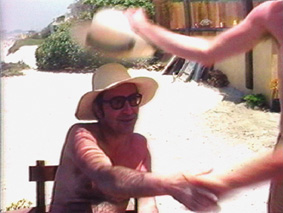
Ira Schneider
A Weekend at the Beach with Jean-luc Godard
Documentary | dv | | 9:59 | USA | 2009
?A Weekend at the Beach, w. Jean-Luc Godard? Del Mar, Calif., USA 1978/1984/2009, 10min. with Godard, Wim Wenders, Heiner Müller and others. In 1978 I shared a house with Jean Pierre Gorin on the beach in Del Mar, California. We were both professors at the University of California, San Diego. Gorin once worked with Godard on a film and invited him to give a lecture at our school. Godard came and stayed at our house. Other filmworld & creative people came to hear Godard. They also stayed at our house. Among them Wim Wenders, Heiner Müller and Jim McBride. I videotaped some of our time at our house on the pacific ocean beach. By 1984 friends who saw it pressured me to make the tape public. Shortly before I edited it, I had seen some Godard political/very wordy films which I couldn?t stand. I therefore spoke a rather cynical narration. In 2009 I was asked to include an introductory verbal statement explaining the above & the sarcastic tone of the ?A Weekend at the Beach, w. Jean-Luc Godard? Del Mar, Calif., USA 1978/1984/2009, 10min. with Godard, Wim Wenders, Heiner Müller and others. In 1978 I shared a house with Jean Pierre Gorin on the beach in Del Mar, California. We were both professors at the University of California, San Diego. Gorin once worked with Godard on a film and invited him to give a lecture at our school. Godard came and stayed at our house. Other filmworld & creative people came to hear Godard. They also stayed at our house. Among them Wim Wenders, Heiner Müller and Jim McBride. I videotaped some of our time at our house on the pacific ocean beach. By 1984 friends who saw it pressured me to make the tape public. Shortly before I edited it, I had seen some Godard political/very wordy films which I couldn?t stand. I therefore spoke a rather cynical narration. In 2009 I was asked to include an introductory verbal statement explaining the above & the sarcastic tone of the video. With it the video now runs 10 minutes.
Schneider, born in New York, 1939. Lives in Berlin. Between 1962 and 1968 produced 8 short experimental films including "Lost in Cuddihy" and "The Ghost of Wittgenstein". The installation "Wipe Cycle" produced with Frank Gillette presented in the first video art group show, also including Nam June Paik, N.Y. 1969. Schneider was co-originator & editor of the video journal, "Radical Software". He co-edited "Video Art, an Anthology", N.Y. 1976, with Beryl Korot. The video installation "Time Zones" (in which one could see all around the earth at the same time) was shown in the Whitney Museum 1981 and over the next years in the Palais de Beaux Arte, Brussels and four other museums in Europe. He has been the recipient of Guggenheim and Fulbright Fellowships. He is the Hannah Hoech Prize winner for 2006, Berlin. His ?Manhattan is an Island? installation was presented at the Reina Sofia Museum, Madrid, 2006/2007. 2008 he has participated in group shows at the Les Rencontres Internationales, Pompidou Centre, Paris & 2009 in Madrid. 2009 he was one of the winners of the Celeste Prize, adjacent to the Venice Biennale and videos and installation were shown at Hamburg Documentary Film Weeks Festival. In 2009 he had solo screenings at the Anthology Film Archives, NYC and a one man show Groznjan, Istria, Croatia.
Catalogue : 2009More or less Related Incidents in Recent History | Experimental video | 16mm | color and b&w | 37:54 | USA | 2008
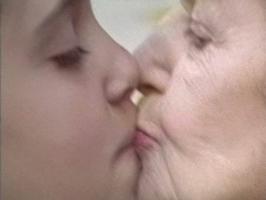
Ira Schneider
More or less Related Incidents in Recent History
Experimental video | 16mm | color and b&w | 37:54 | USA | 2008
?More or Less Related Incidents in Recent History? started as film in 1968 about the painting of a boutique in Greenwich Village, Manhattan, New York City and the scene that evolved around it, it contrasted the News of the Viet Nam war from its origins in the 1950s with the fashion scene of the late 60s. A free, but bad transfer from film to video in 1975 destined the work to the film bin until P. Weibel from ZKM Karlsruhe, Germany supported the transfer of the film to Digital Betacam at Das Werk, München in 2003 and restoration of all the necessary video tapes. I filmed the rock n?roll sequences in 1967 and 1968 with reversal Ektachrome pushed to 1600 ASA (earlier these were passed through an analog video echo in 1975). The original Greenwich Village site was recorded in 1976 and 2004. I retrieved a video of Abbie Hoffman shot in 1969 and included some images of George W. Bush in the final editing process in June 2008 in Berlin, Germany. All along I contrast the notion of wars in distant lands with the day to day bourgeois concerns in relatively safe land.
Schneider, born in New York, 1939. Lives in Berlin. Between 1962 and 1968 produced 8 short experimental films including "Lost in Cuddihy" and "The Ghost of Wittgenstein". The installation "Wipe Cycle" produced with Frank Gillette presented in the first video art group show, also including Nam June Paik, N.Y. 1969. Schneider was co-originator & editor of the video journal, "Radical Software". Schneider`s "Manhattan is an Island" a video installation was exhibited in the Kitchen, Everson Museum in 1974, and at the Whitney Museum, N.Y. in 1977. In 2006 it was purchased by the Reina Sofia Museum in Madrid & exhibited until April 2007. He co-edited "Video Art, an Anthology", N.Y. 1976, with Beryl Korot. The video installation "Time Zones" (in which one could see all around the earth at the same time) was shown in the Whitney Museum 1981 and over the next years in the Palais de Beaux Arte, Brussels, Kunsthalle Mannheim, Museum of Modern Art, Vienna, Nouvelle Museum, Lyon and the Barbican Center, London. He has had exhibitions at the Museum of Image & Sound, Sao Paulo, ZKM, Karlsruhe and has been the recipient of Guggenheim and Fulbright Fellowships. He is the Hannah Hoech Prize winner for 2006. In 2007 & 2008 he has had exhibitions at the Wewerka, Lecoq Galerie and Kunstpunkt, Berlin and at the Emily Harvey Foundation in New York City.
Annelore Schneider, Claude Piguet
Catalogue : 2022White Shadow | Experimental fiction | mov | color | 10:24 | United Kingdom | 2021
Annelore Schneider, Claude Piguet
White Shadow
Experimental fiction | mov | color | 10:24 | United Kingdom | 2021
In this speculative fiction, all the world’s photographs have suddenly turned into the objects they represent. The video “White Shadow” depicts a vertiginous architecture, so devastating that it created new uncontrollable borders and isolated people. Piles of selfies, cats, and meals are scattered everywhere. Text messages evoke a new society living with limitations and suffering from media saturation, sensory overload, and crushing ecological impact. A world where images have taken over, invading and transforming space. They become the only reality that is still visible, as the whole world is turning inwards.
The collectif_fact comprised Annelore Schneider and Claude Piguet. They live and work between London and Geneva. Their work investigates how narrative and cinematic codes can expand our relation to space and objects. Their research considers storytelling, editing and filming as a tool to speculate and critically reflect on the habits that condition our perception of reality. Their film frequently uses the spectator’s ability to construct stories from ruptured narrative fragments and their desire to be gripped and even deceived by images and stories. collectif_fact’s films have been shown internationally in art festivals and exhibitions, including Maison européenne de la photographie, Paris, Centre d’art contemporain, Geneva Centre Culturel Suisse Paris, Hiroshima Museum of Contemporary Art, Lianzhou Foto Festival, Metropolis Art Center, Beijing, Fotomuseum Winterthur. They received numerous awards such as the Swiss Art Award and recently Grand Prix Culturel Migros, Swiss Art Council Pro Helvetia Production Grant and residency Art + Tech Space Studios, London.
Corinna Schnitt
Catalogue : 2018Vollendete Zukunft (Future Perfect) | Experimental fiction | hdv | color | 9:0 | Germany | 2016
Corinna Schnitt
Vollendete Zukunft (Future Perfect)
Experimental fiction | hdv | color | 9:0 | Germany | 2016
Eight protagonists distributed over Marls central Rathausplatz in front of the Skulpturenmuseum use megaphones to call out everyday phrases to each other as if they were carrying out a conversation: “ Do you think he will have won the Lotto ” or “ You will have told me much about your experiences“. Formulated in future perfect, these shouts play with the expectation that certain events will have happend by a certain time in the future. This construction has a distancing effect on the here and now and on the ease of normal everyday conversation, showing the extent to which a present experience is determined by expectations of the future. The use of megaphones seems antiquated today and thus deals ironically with present-day forms of communication. Like on the Web, banal experiences from one`s own life are communicated to an imaginary public without controls or personal contact. Marl`s Rathausplatz and the Skulpturenmuseum were constructed in the 1970s and document the city`structural rebirth, carried out with the goal of turning the urban core into a vibrant place and optimally combining diverse functions. Previously regarded as amuch lauded model solution, it is now obvious that the utopian promise of a city that radically deviates from traditional urban structures has not been fulfilled in the long run.
Born in Duisburg, Germany, lives and works in Braunschweig. From 1986 to 1989 apprenticeship as a carver (diploma), Michelstadt, from 1989 to 1996 studies at the Hochschule für Gestaltung (Academy for Visual Communication), Offenbach, as well as at the Kunstakademie (Art Academy) in Düsseldorf (1995 Masterstudent). Since 2009 Professor for Film/Video at the University of Art Braunschweig.
Catalogue : 2011Hänschen klein | Experimental video | | color | 7:0 | Germany | 2009
Corinna Schnitt
Hänschen klein
Experimental video | | color | 7:0 | Germany | 2009
In a single shot the film shows different time-periods and creates a fairytaile atmosphere. A stillife is presented in an outside garden in front of a modern architecture, that has a fake- wooden-outside design.The paradox longing for both experiencing adventure and wanting to feel at home is part of the children-song.
CV Corinna Schnitt was born in Duisburg,Germany. From 1989-96 she studied art and film at the Hochschule für Gestaltung, Offenbach and the Kunstakademie Düsseldorf
Catalogue : 2009Von einer Welt | Experimental video | 35mm | color | 9:34 | Germany | 2007
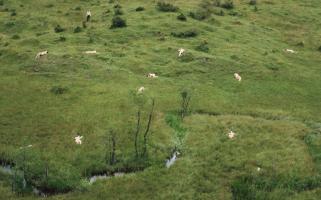
Corinna Schnitt
Von einer Welt
Experimental video | 35mm | color | 9:34 | Germany | 2007
In ?Von einer Welt? [?About a World?], Corinna Schnitt?s latest work, the world is an idyllic Alpine landscape of forests and meadows. A man is striding through it, alone, to stand in the next scene on a meadow with a dozen nude women lying in high grass; each is draped as they would be if drawn from life by a painter. The man, whose uncertainty an loneliness are palpable, approaches each woman individually, one after the other, caressing and making erotic overtures, at times tenderly, at others more overtly. His attempts at making contact remain futile, however, as they produce no reaction at all. The women seem to have become part of nature, as if ?from another world?. Again a long shot of the scenery appears, this time with passages fromJu_rgen Habermas? The Theory of Communicative Action, which can be read on the lower edge of the picture.The excerpts dealing with ?communicative rationality? shift the sensory/sensual image to an abstract plane while also providing the work with its title. With minimalist staging devices, the artist opens a discourse on the forms of aphasia between the sexes, between body and intellect, between the emotional and the rational, between nature and culture, between one world and another. Anke Hoffmann
Corinna Schnitt, born in Duisburg, studied art and film at the University of Visual Communications in Offenbach and at the Art-Academy in Düsseldorf, Germany.
Corinna Schnitt
Catalogue : 2007Once Upon a Time | | | color | 22:0 | Germany | 2006
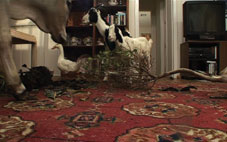
Corinna Schnitt
Once Upon a Time
| | color | 22:0 | Germany | 2006
In a living room, a camera is slowly turning round, about thirty centimetres above the carpet. There is no one to be seen. A cat suddenly appears and moments later a second one enters the room. A dog drinks water from a fish bowl, a bird joins the assembled company, a rabbit hops in, a goose waggles its way among them, somewhere a pig is grubbing about, and there is a goat, and there is a lama, and there is no end to it. Gradually the room fills up with more and more animals which are sniffing each other, startling each other, or munching on a house plant together. In the intro to "Living a Beautiful Life" (2003), an earlier work by Corinna Schnitt, we saw all kinds of very young children sitting, lying, walking, and playing naked together in an idyllic landscape. The religious or romantic association with a primeval world in which living creatures would once have co-existed, also emerges from "Once Upon a Time". The natural habitat in which these animals once lived has been replaced by the interior of a house. Does the word "natural" have any meaning left in connection with animals that, in our culture, have practically all been domesticated? They are simply pets and domestic animals, so they are not really out of place here. As is often the case in Schnitt's work, here too, it seems to be about the artificiality or neurotic quality of human behaviour and the problematic contrast between 'nature' and 'culture'. Although man is absent in this work, in that absence he is still part of the representation. Observing these animals that will not often be found together in this sort of setting easily makes one think about how we would behave in this kind of room.
Corinna Schnitt was born in 1964. Artist and director, she has evolved in the artistic milieu as much in Germany as internationally. After an apprenticeship in wood sculptures, she studied at the Hochschule für Gestaltung in Offenbach and at the Art Academy of Düsseldorf. For a number of years now she has resorted to the medium of cinema fo her artistic creations. She has thus made a series of experimental short films in which daily phenomena are pushed to the absurd, like a spiral with no end. Besides a number of video installations projected in museums and galleries, Corinna unveils her works in the framework of film festivals as well as on German television.
Susanna Schoenberg
Catalogue : 2007Garage|Katze | Experimental video | dv | color | 7:0 | Italy, Germany | 2005
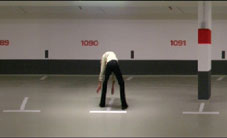
Susanna Schoenberg
Garage|Katze
Experimental video | dv | color | 7:0 | Italy, Germany | 2005
The longest parking garage in Germany as a metric metaphor of the history of thought; a masked figure running after herself as a poetic metaphor of the sovereign subject; the trivial gesture of the cat-woman who does not know any evolution apart from her own caprice.
Susanna Schoenberg was born in 1967 in Italy. She grew up in Bolzano/Bozen, lived and studied in Milan and Berlin, and since 1999 has been living in Cologne (Germany). She studied social sciences, cinematographic techniques, and media arts, and her artistic production since 1990 has mainly been in the fields of video, photography and installation. Focus points of her work include media oriented arts, in particular computer supported installations, experimental video, documentary, and photography.
Gianna Felicita Scholten
Catalogue : 2023At Night by Horse | Experimental fiction | hdv | color and b&w | 11:48 | Switzerland | 2023
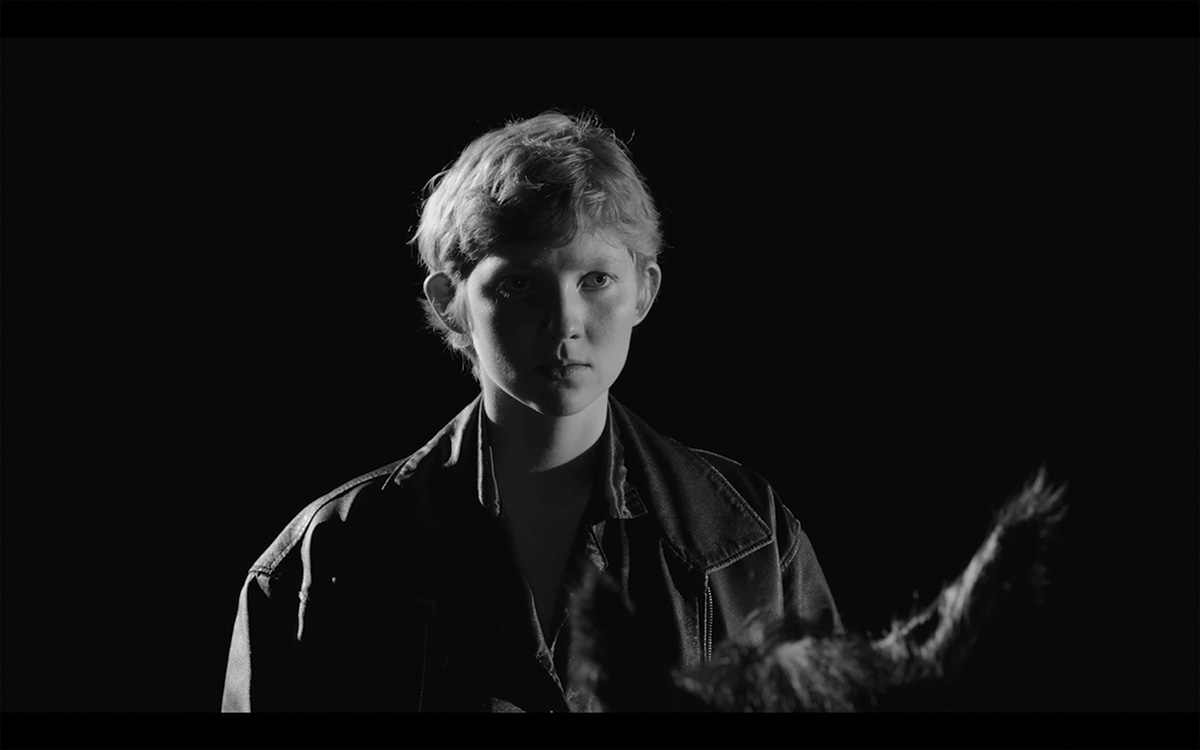
Gianna Felicita Scholten
At Night by Horse
Experimental fiction | hdv | color and b&w | 11:48 | Switzerland | 2023
Micki rides across the night through a palm forest. With the quiet and the loneliness, the repressed heartbreak pushes to the surface and Cassi becomes real. Like two homopolar magnets charged with their tangled traumas, they fail to find each other this time once again. But at dawn the wounds heal. Cassi disappears and the last video is deleted. But you can't force goodbyes, because feelings are real.
Gianna Scholten is a writer and filmmaker from Switzerland and Germany. She graduated from the German Film and Television Academy Berlin (dffb) in 2020 and continued her studies at the Academy of Media Arts Cologne (khm). During her time at the khm, she dedicated herself to creating film projects and radio plays. Her work has been awarded the Prix Alice Guy Prize of the FID Marseille and the New Signs Award of the Film Fest Lago.
Sabine Schöbel
Catalogue : 2010GRUNSKE | Experimental film | | color | 5:0 | Germany | 2009
Sabine SchÖbel
GRUNSKE
Experimental film | | color | 5:0 | Germany | 2009
The demise of the `Palace of the Republic` in Berlin, at sunset. This is a portrait of a powerful symbol of nostalgia for the GDR that was re-used, restored and then, eventually, demolished, becoming a changing, magical emblem of the new centre of the city. The last glimpses of its `skeleton` evoke thought-provoking experiences: the last bits of stairwells are reminiscent of other images of ruins, such as Berlin in the 1940s, when it was a bombed-out city, or of the World Trade Center in New York. It also conjures notions of the Romantic era in the 17th and 18th centuries, when ruins where expressly built. "GRUNSKE" is, in an odd way, the name of the sculptor responsible for this accidental monument: it`s the name of a company that recycles metal. Over the course of months, their machinery carried out the contract of dismantling the Palace, for the public good in a public space.
Sabine Schöbel was born in 1962. She works in architecture/design, set design, and film studies. Her first film, LUPINEN LÖSCHEN, premiered in 2007 at Forum expanded. Presently she is managing director at Arbeitskreis Film Regensburg / Regensburger Kurzfilmwoche.
Catalogue : 2008Lupinen löschen | Experimental film | super8 | color | 6:0 | Germany | 2006
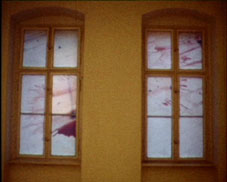
Sabine SchÖbel
Lupinen löschen
Experimental film | super8 | color | 6:0 | Germany | 2006
"Lupinen löschen" shows both the beauty and the frightening character of a small and not so banal incident: bottles of red wine fall and smash to smithereens. They create superb red stains on the white floor, and reflect the light coming in through the windows. The camera then very slowly continues to film as it moves back from this image, first filming the ground, then the windows, the stucco on the ceiling, the wallpaper, then returns to the floor and the two windows. In a single sweep the floor is clean and the stains are now outside instead. This work refuses any and all clearly defined explanations. It repeats an experience that stretches within this languorous manner of filming everyday life, of light and movement, and images full of meanings of horror and various misfortunes. According to Sabine Schöbel, "Lupinen löschen" remains, outside this 'game' of appearances, the realization of souvenirs and memories in space.
Sabine Schöbel was born in Bayreuth. Elle studied in Ratisbonne, Grenade, Madrid, Frankfurt-Am-Main, and Potsdam. She did her thesis in the area of theatre, cinema, and the media at the University of Frankfurt. She creates works in architecture/design, filmmaking, and cinematography. She has worked as a scientific collaborator at the media sciences department at the University of Paderborn from 2003-05, and as a filmmaking assistant for the movie "Herr Lehman", Germany 2002. Among her personal productions are "les lumières de la villa Tiedka" in Potsdam, 2003; the Claudia Heser House project in Warmensteinach, 2005; as well as the preparing and making of the televised game "Die Überflüssigen", ZDF 2006. "Lupinen löschen" is her first film.
Floris Schönfeld, Frank Chu
Catalogue : 2014The Richest Family; The Early Episodes | Experimental doc. | hdcam | color | 15:0 | Netherlands, USA | 2013
Floris SchÖnfeld, Frank Chu
The Richest Family; The Early Episodes
Experimental doc. | hdcam | color | 15:0 | Netherlands, USA | 2013
The Richest Family; The Early Episodes is a project by artist Floris Schönfeld in collaboration with Frank Chu. At the center of The Richest Family; The Early Episodes is the internal world of Frank Chu, intergalactic movie star and well-known San Francisco Bay Area protestor. Frank believes that he is the victim of an intergalactic conspiracy that is based around him being the star of a popular television sitcom called The Richest Family. This show features him and his family and is recorded without his consent and broadcast to huge audiences in a number of alternate galaxies known as the 12 Galaxies. He can often be found at large public demonstrations in the San Francisco Bay Area protesting for impeachment of various public figures who he sees as complicit in this conspiracy. For the work The Richest Family; The Early Episodes two bootleg episodes of the television show The Richest Family were made. As well as staring in the episodes Frank was instrumental in the co-directing, and scripting of the pieces together with artist Floris Schönfeld. The Richest Family; The Early Episodes will be the first episodes of The Richest Family to be seen on Earth that have Frank?s full consent.
Frank Chu (b. 1960, Oakland, California, US; based in Oakland) is a professional protester and intergalactic television and movie star. He studied Business Administration at the University of California, Berkeley; California State University, Hayward; Merritt College, Oakland; and Laney College, Oakland, before receiving an Associate?s Degree in Business Administration from The College of Alameda, California, US. Since 1998, Chu has presented his ongoing series of signs in daily protests throughout the San Francisco Bay Area. His work is the subject of "Jretdrostrenikal Exhibitions", an ongoing and undefined solo exhibition at Objectif Exhibitions, Antwerp (2012-ongoing); and he has recently participated in group exhibitions including "Portable Holes", San Francisco Pavilion, 9th Shanghai Biennale, China (2012); "Sõida tasa üle silla (Ride gently over the bridge)", Galerii Noorus, ART IST KUKU NU UT Festival, Tartu, Estonia (2012); and "Psymulation: Reenactments of the Present", Photo Epicenter, San Francisco, US (2008). Floris Schönfeld (1982) is a visual artist currently based in London and San Francisco. He works mainly with film and performance. The focus of his work in the last years has been the relationship between fiction and belief. In his work he is constantly trying to find the line between defining his context and being defined by it. In 2010, Floris completed the multi-disciplinary project ?u? in which he reconstructed the first ever authentic Klingon opera on Earth and made the film The QiH Act based on the performance of the opera for an entirely Klingon audience. In 2011, he made the film Discours de Fou as part of the International Ghetto Biennale in Port-au-Prince, Haiti and in 2012 he was commissioned to make work for the San Francisco Pavilion at the 12th International Shanghai Biennale. Schönfeld?s work has been shown at many film festivals and intsitutions throughout the world including the Amsterdam Film Biennale, Rencontres International Paris/Madrid/Berlin, the Rotterdam International Film Festival, the Haus der Kulturen der Welt Berlin, the Kassel Documentary & Film Festival (where it was nominated for the A38-Prodcution Grant) and the Kadist Foundation in San Francisco. Floris is currently a graduate fellow at the Headlands Center for the Arts in the San Francisco Bay Area.
Floris Schönfeld, Michaël SEWANDONO
Catalogue : 2010WEIGHT - End of the World | Video | dv | color | 5:0 | Netherlands | 2009
Floris SchÖnfeld, Michaël SEWANDONO
WEIGHT - End of the World
Video | dv | color | 5:0 | Netherlands | 2009
Weight is a series of short films that are each based on different excerpts from literature. The selected excerpts served as the scenario for the films, and demonstrate the moments of subtle tension that precede a significant event in the plot. A search for the moment, and for the physical state of the decision making. Removed from the context of the original story these excerpts are enigmatic, but retain the same tension inherent to their former position. As they start to interact on a suggestive level a new, highly tense, charged story emerges. The project strives to convey the `weight` of the moments without the context of their original narratives. The series currently consists of four films; 1. Oracle Night based on Oracle Night by Paul Auster 2. Miso Soup based on In the Miso Soup by Rui Murakami 3. End of the World based on Hard-boiled wonderland and the End of the World by Haruki Murakami 4. The Outsider based on The Outsider by Albert Camus
Floris Schönfeld (Houston, VS, 1982) is a visual artist and filmmaker working in Amsterdam and The Hague. He studied time-based arts at the Gerrit Rietveld Academy in Amsterdam and has recently completed a masters at the Interfaculty ArtScience at the Royal College of the Arts/Royal Conservatoire The Hague. In his film and performance work he is primarily concerned with the awesome power of fiction and it?s effects on humanity. Michaël Sewandono (1979) studied audiovisual art at the Gerrit Rietveld Academy in Amsterdam and he studied at the Escuela Internacional de Cine Y Television de Cuba, Havana. Between 2005 and 2008, he has been working on film projects, commercials and music videos. Sewandono currently works on the completion of short films and the development of two feature films.
Volker Schreiner
Catalogue : 2016Sites | Experimental film | hdv | color and b&w | 8:20 | Germany | 2015
Volker Schreiner
Sites
Experimental film | hdv | color and b&w | 8:20 | Germany | 2015
A filmic tryptic of three landscapes.
video works since 1988/ grants at the Cité Internationale des Arts Paris, the Deutsche Akademie Villa Massimo Rome/ lectureships at the HfG Karlsruhe and the HBK Braunschweig/ visiting professorships at the HBK Braunschweig and the Johannes-Gutenberg-Universitaet Mainz/ lectures, workshops and seminars a.o. in Rome, Istanbul, Casablanca, Jerusalem, Bangkok/ participation in numerous festivals and tours/ works owned a.o. by the NBK Berlin, the ZKM Karlsruhe, the Ludwig Museum Cologne, the Museum fuer Neue Kunst Karlsruhe, the Amsterdam Film Museum/ distribution by Heure Exquise! and Light Cone Paris/ internet: volkerschreiner.de
Catalogue : 2013Hollywood Movie | Experimental film | hdv | color and b&w | 7:0 | Germany | 2012
Volker Schreiner
Hollywood Movie
Experimental film | hdv | color and b&w | 7:0 | Germany | 2012
A transformation of Nam June Paik`s text "film scenario" into a movie. Hollywood stars speak Paik: "You can make any Hollywood movie interesting, if you cut the movie several times ..." Michael Caine, Humphrey Bogart, Elizabeth Taylor, John Torturro, Katharine Hepburn and other protagonists of mainstream cinema are assembled to speak a text about deconstructing film watching.
Volker Schreiner video works since 1988/ grants at the Cité Internationale des Arts Paris, the Deutsche Akademie Villa Massimo Rome/ lectureships at the HfG Karlsruhe and the HBK Braunschweig/ visiting professorships at the HBK Braunschweig and the Johannes-Gutenberg-Universitaet Mainz/ lectures, workshops and seminars a.o. in Rome, Istanbul, Casablanca, Jerusalem, Bangkok/ participation in numerous festivals and tours/ works owned a.o. by the NBK Berlin, the ZKM Karlsruhe, the Ludwig Museum Cologne, the Museum fuer Neue Kunst Karlsruhe, the Amsterdam Film Museum/ distribution by Heure Exquise! and Light Cone Paris/ internet: volkerschreiner.de
Catalogue : 2012Pair Of | Experimental film | betaSP | black and white | 4:38 | Germany | 2011
Volker Schreiner
Pair Of
Experimental film | betaSP | black and white | 4:38 | Germany | 2011
A pair of hands, a pair of rings, two candles, cards, cables, fingers, photos, needles, glasses, chairs ? a couple, a pair, pairwise, pairs of words ? close-distant, longing-leaving, connecting-separating, remembering-forgetting, inside-outside, ahead-behind, before-after.
Volker Schreiner video works since 1988/ grants at the Cité Internationale des Arts Paris, the Deutsche Akademie Villa Massimo Rome/ lectureships at the HfG Karlsruhe and the HBK Braunschweig/ visiting professorships at the HBK Braunschweig and the Johannes-Gutenberg-Universitaet Mainz/ lectures, workshops and seminars a.o. in Rome, Istanbul, Casablanca, Jerusalem, Bangkok/ participation in numerous festivals and tours/ works owned a.o. by the NBK Berlin, the ZKM Karlsruhe, the Ludwig Museum Cologne, the Museum fuer Neue Kunst Karlsruhe, the Amsterdam Film Museum/ distribution by Heure Exquise! and Light Cone Paris/ internet: volkerschreiner.de
Catalogue : 2011Cycle | Experimental film | betaSP | color and b&w | 4:14 | Germany | 2010
Volker Schreiner
Cycle
Experimental film | betaSP | color and b&w | 4:14 | Germany | 2010
?Clips from Curtiz to Lynch, from A Place in the Sun to White Noise. Assembled under the aspect of the dominating light source in each particular excerpt, which in this unsettling four minutes work shows off as the merciless ruler over the sound. Or, in the words of found-footage-virtuoso Volker Schreiner: ?Rooms illuminated by oscilling light, lightened up in rhythmic intervals by lamps and neon signs or irregular flashes of light . People are waiting, awaiting, pondering, searching, worrying.?? (catalogue Viennale 10, 2010)
VOLKER SCHREINER 1988/89 grant Cité Internationale des Arts Paris, 1993 lectureship HfG Karlsruhe, 1994-98 lectureship HBK Braunschweig, 1998/99 grant Deutsche Akademie Villa Massimo Rome, 2000/01 visiting professor HBK Braunschweig, 2002/03 visiting professor Johannes-Gutenberg-Universitaet Mainz, lectures, workshops and seminars a.o. in Rome, Istanbul, Ankara, Casablanca, Jerusalem, Bangkok, participation in numerous festivals and tours, works owned a.o. by the NBK Berlin, the ZKM Karlsruhe, the Ludwig Museum Cologne, the Museum fuer Neue Kunst Karlsruhe, the Amsterdam Film Museum www.volkerschreiner.de
Catalogue : 2010GRID | Experimental film | betaSP | black and white | 5:32 | Germany | 2009
Volker Schreiner
GRID
Experimental film | betaSP | black and white | 5:32 | Germany | 2009
Traces, devices, indications, found and discovered, clues and hints referring to absentees - a compilation of excerpts from movies and feature films.
VOLKER SCHREINER 1988/89 grant Cité Internationale des Arts Paris, 1993 lectureship HfG Karlsruhe, 1994-98 lectureship HBK Braunschweig, 1998/99 grant Deutsche Akademie Villa Massimo Rome, 2000/01 visiting professor HBK Braunschweig, 2002/03 visiting professor Johannes-Gutenberg-Universitaet Mainz, participation in numerous festivals and tours, works owned a.o. by the NBK Berlin, the ZKM Karlsruhe, the Ludwig Museum Cologne, the Museum fuer Neue Kunst Karlsruhe, the Amsterdam Film Museum
Catalogue : 2009Scope | Experimental film | betaSP | color and b&w | 4:57 | Germany | 2008
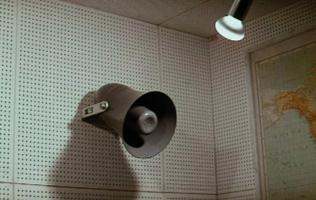
Volker Schreiner
Scope
Experimental film | betaSP | color and b&w | 4:57 | Germany | 2008
"Main motive is the speaker - on masts, in halls, on roofs in cars, living rooms, in headphones and handsets, in radio installations. Sound get through the speakers, as unclear part of communication and dialogues, distorted music and announcements, search of transitions, noise." (catalogue Viennale 2008)
VOLKER SCHREINER 1988/89 grant Cité Internationale des Arts Paris, 1993 lectureship HfG Karlsruhe, 1994-98 lectureship HBK Braunschweig, 1998/99 grant Deutsche Akademie Villa Massimo Rome, 2000/01 associate professor HBK Braunschweig, 2002/03 associate professor Johannes-Gutenberg-Universitaet Mainz, participation in numerous festivals and tours, works owned a.o. by the NBK Berlin, the ZKM Karlsruhe, the Ludwig Museum Cologne, the Museum fuer Neue Kunst Karlsruhe, the Amsterdam Film Museum www.volkerschreiner.de
Catalogue : 2008Cell | Experimental film | dv | color | 4:27 | Germany | 2006
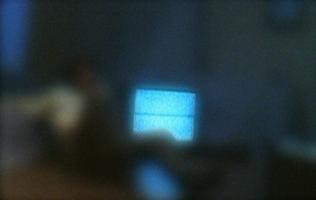
Volker Schreiner
Cell
Experimental film | dv | color | 4:27 | Germany | 2006
"Living rooms coolly lit by white noise on TV screens are a familiar harbinger of approaching doom in most feature films. In Cell, just this one unheimisch cinematographic element is put under the magnifying glass. A concentrated montage of countless fragments with flickering and spooky snow-covered screens from Hollywood films. This is the ultimate meta-cinema. No message, just medium." (catalogue International Film Festival Rotterdam 2007)
Volker Schreiner, since 1988 videos, video-installations and video sculptures/ a.o. grant Villa Massimo Rome, grant Cité des Arts Paris, grant Kunstfonds Bonn, prize winner of the 5th Marl Video-Kunst-Preis/ lectureships at the HfG Karlsruhe and the HBK Braunschweig, associate professor at the HBK Braunschweig and the Johannes Gutenberg-University Mainz/ works owned a.o. by NBK Berlin, ZKM Karlsruhe, Museum Ludwig Cologne, Museum fuer Neue Kunst Karlsruhe, Film Museum Amsterdam
Catalogue : 2008From Afar | Experimental film | dv | color and b&w | 5:25 | Germany | 2007
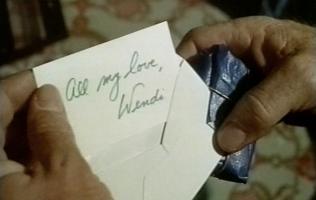
Volker Schreiner
From Afar
Experimental film | dv | color and b&w | 5:25 | Germany | 2007
A compilation of 200 notes from movies.
Volker Schreiner, since 1988 videos, video-installations and video sculptures/ a.o. grant Villa Massimo Rome, grant Cité des Arts Paris, grant Kunstfonds Bonn, prize winner of the 5th Marl Video-Kunst-Preis/ lectureships at the HfG Karlsruhe and the HBK Braunschweig, associate professor at the HBK Braunschweig and the Johannes Gutenberg-University Mainz/ works owned a.o. by NBK Berlin, ZKM Karlsruhe, Museum Ludwig Cologne, Museum für Neue Kunst Karlsruhe, Film Museum Amsterdam
Catalogue : 2007Radar | Experimental film | dv | color and b&w | 5:14 | Germany | 2006
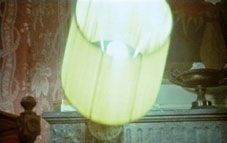
Volker Schreiner
Radar
Experimental film | dv | color and b&w | 5:14 | Germany | 2006
A compilation of cones of light from electric torches. "Radar" leads to an eerie pursuit of tracks. Hesitant cones of light, made from fragments of innumerable films, light up in a sporadic manner a path leading to nothingness. A metaphorical reflection on the darker side of existence as well as the light of knowledge. 2006 5 minutes 14 seconds Color / b&w Mono channel 1+2 PAL
Volker Schreiner was born in Germany in 1957. He has led numerous lectures and seminars, has held several lectureship and associate professor positions, and has won numerous awards and grants, such as a grant at the Cité Internationale des Arts Paris in 1988/89, and a grant at the Deutsche Akademie Villa Massimo Rome in 1998/99. His work has been presented at festivals in, among other places, Berlin, Oberhausen, The Haag, Rotterdam, Paris, Madrid, Rome, New York, Montréal, Tokyo, Sydney and Moscow, and he has participated in numerous tours. Schreiner's works are owned by the Neuer Berliner Kunstverein, the Mediathek of the Zentrum für Kunst und Medientechnologie Karlsruhe, the University of Québec Montréal, the Ludwig Museum Köln, the Museum für Neue Kunst Karlsruhe, and the Amsterdam Film Museum, to count a few.
Catalogue : 2006Counter | Art vidéo | dv | color and b&w | 6:30 | Germany | 2004
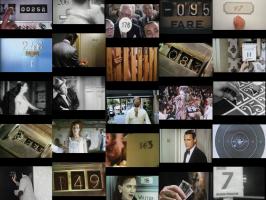
Volker Schreiner
Counter
Art vidéo | dv | color and b&w | 6:30 | Germany | 2004
?This is a work based on found footage. Schreiner extracted sequences with numbers from many movies, both classic and obscure. Using these short fragments he compiled a countdown starting from the number 266. A strong effect of suspense is created, the tight-paced montage holding the viewer`s attention.? (catalogue Invideo, Milan 2004)
Catalogue : 2006Fiction Artists | Art vidéo | dv | color and b&w | 45:0 | Germany | 2004
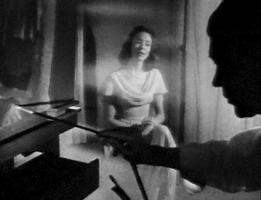
Volker Schreiner, Christoph GIRARDET
Fiction Artists
Art vidéo | dv | color and b&w | 45:0 | Germany | 2004
Artists from films, whose lives are made-up, fictional artists: who are they, how do they live, how do they work? What kind of clichÈs do they convey? Do they reflect the way that contemporary artists view themselves or do they represent an anachronistic image of theartist in a society heavily influenced by modern media? The twelve montages, taken from more than one hundred films ranging from classics to B-movies, engage in a subjective game with these questions.